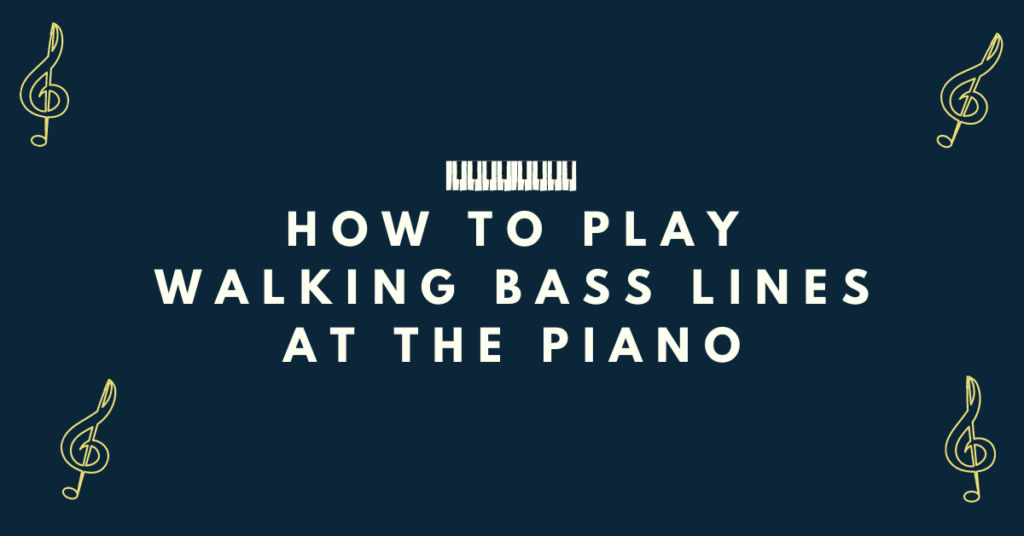In Part 1 of this “Learn to Play Stride Piano” article we focused on Phase 1 and Phase 2 of our stride piano approaches. These phases were meant to introduce one element of stride piano at a time in a way that gradually increases the level of difficulty. By working through these phases, you can structure your practice to master one aspect of stride piano playing at a time. Here we will discuss Phase 3, which is the most challenging but most most rewarding phase. This phase of stride piano playing will bring you to that advanced, professional, classic jazz piano sound. Let’s get started!
Beats 1 and 3
To start, we are still going to play the root of the chord on the downbeat of each new chord change (which in our example of the 1st 4 measures of “It’s Only a Paper Moon” will be beats 1 and 3). However, we’re going to now add a note – the 5th of the chord. So now we’ll play the root and 5th of every chord on beats 1 and 3:

Also, it’s important to note what’s happening in measure 4. We have a C major 6 chord, but this chord lasts for the entire measure, not just two beats like all of the previous chords. In cases where the chord lasts for a whole measure we will play the root (or root and 5th) on beat 1 and the 5th (single note or in octaves) on beat 3.
Beats 2 and 4
We’re now going to fill in beats 2 and 4 of each measure. On these beats our left hand will jump up (always up from the root) and play a complete chord, generally using 4 notes in order to get a dense, robust sound. For these chords, close-position rootless voicings work really well (meaning chords that are within an octave range and usually don’t contain the root, which is being played on beat 1 or 3 anyway). Filling in beats 2 and 4 with these close-position rootless voicings results in something like this:

Practice Ideas
It’s important to minimize your mistakes when learning because you want to begin imprinting the correct way to play the stride pattern. For this reason, and because your left hand is moving consistently across a wide range, be sure to practice slowly.
“Looping” is also a helpful practice idea in which you simply play a single measure over and over again in time (with your metronome) in order to get a lot of repetitions and therefore build muscle memory. Remember to work slowly and start one hand at a time. It’s very important to have the left hand stride part mastered before trying to add the right hand.
Once you’re able to play hands together (even at a slow tempo) try using your metronome on beats 2 and 4, as opposed to having the metronome click on every beat. Being able to play with the metronome set to beats 2 and 4 will improve your overall sense of time and will also help you develop a sense of swing.
For these and more practice ideas, as well as all 3 phases of stride playing explained in detail, check out our Stride Piano lesson!

